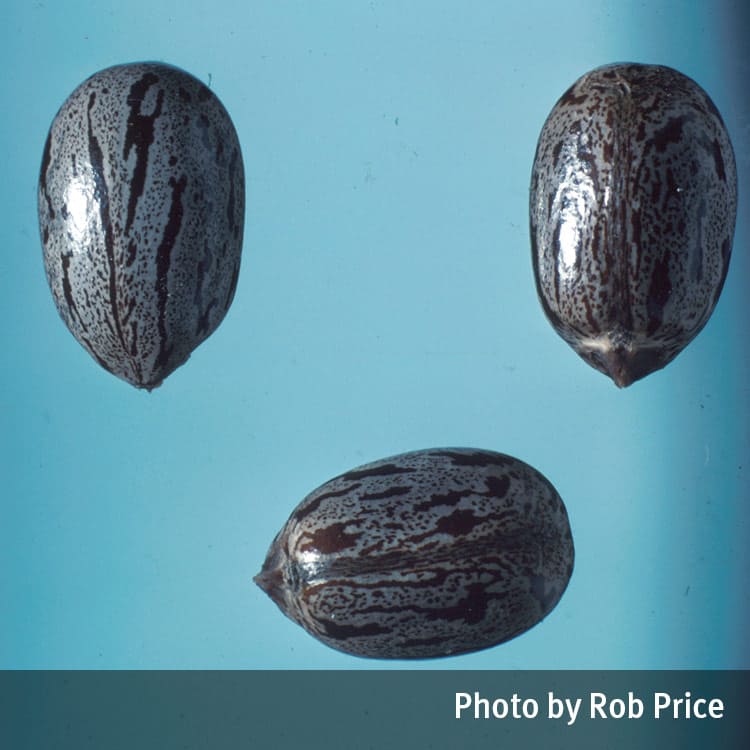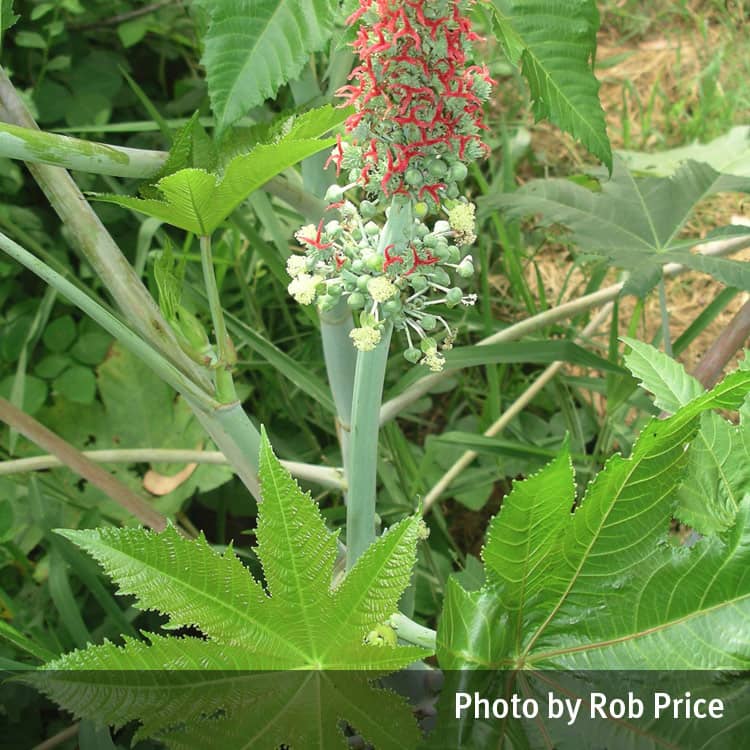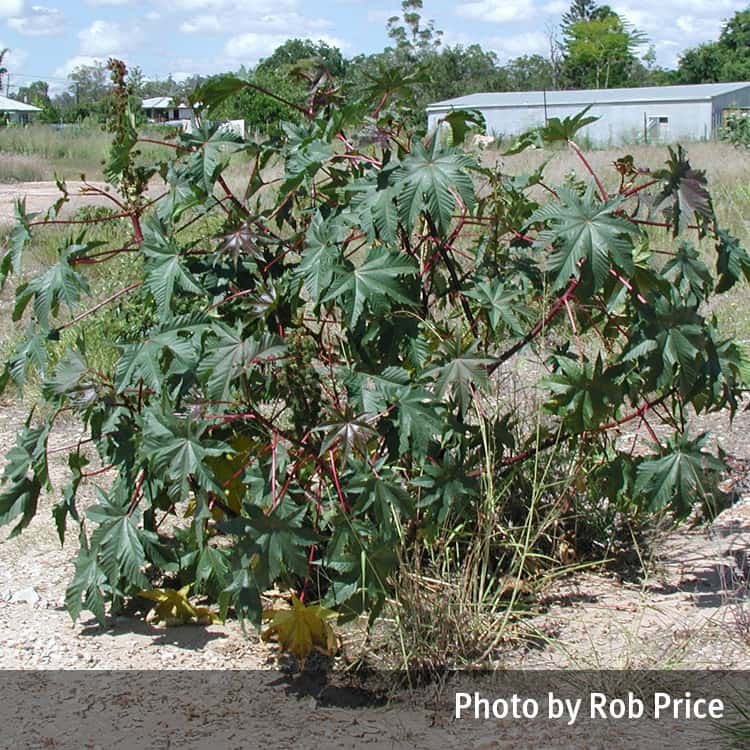Warning
Seek urgent medical attention if seeds are ingested.
Description
A blue-green fleshy shrub to 3m tall. A common weed in coastal areas and often found growing along creek banks and in disturbed, neglected areas.
The flowers, which are about 1cm in diameter, occur on stout erect spikes.
The leaves are large, 10–60cm across, and divided into seven to ten lobes. The leaf stalks are centrally attached, long and hollow, and have a whitish bloom. The leaves have a nauseating odour when crushed.
Toxicity
Symptoms
Ingestion of seeds may cause a burning sensation in the mouth or throat, severe gastro-intestinal irritation with vomiting, diarrhoea and bleeding. Symptoms may be delayed hours to days after ingestion. Liver damage and life threatening poisoning can occur. Respiratory and eye irritation may result from close proximity to the plant, particularly when blooming.
Images



Details
Common name: Castor oil plant
Botanical name: Ricinus communis
Other common names: Castor bean, palma christi
Family: Euphorbiaceae
General description: A blue-green fleshy shrub to 3m tall. A common weed in coastal areas and often found growing along creek banks and in disturbed, neglected areas.
Flowers: The flowers, which are about 1cm in diameter, occur on stout erect spikes.
Leaves: The leaves are large, 10–60cm across, and divided into seven to ten lobes. The leaf stalks are centrally attached, long and hollow, and have a whitish bloom. The leaves have a nauseating odour when crushed.
Fruit/Berries: The fruit are soft and spiny, slightly three-lobed and 1.5–2.5cm across. Each lobe contains one shiny mottled grey seed.
Other: The sap is clear.